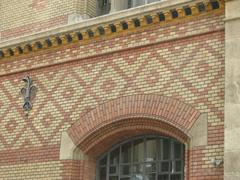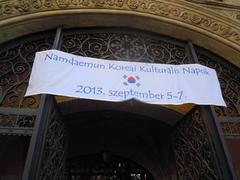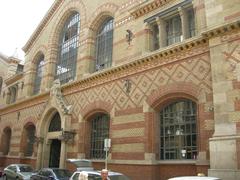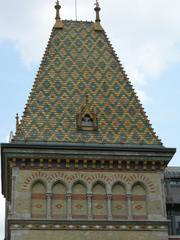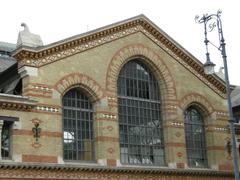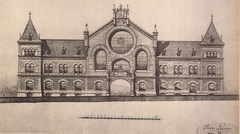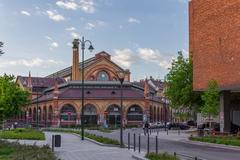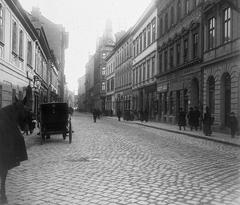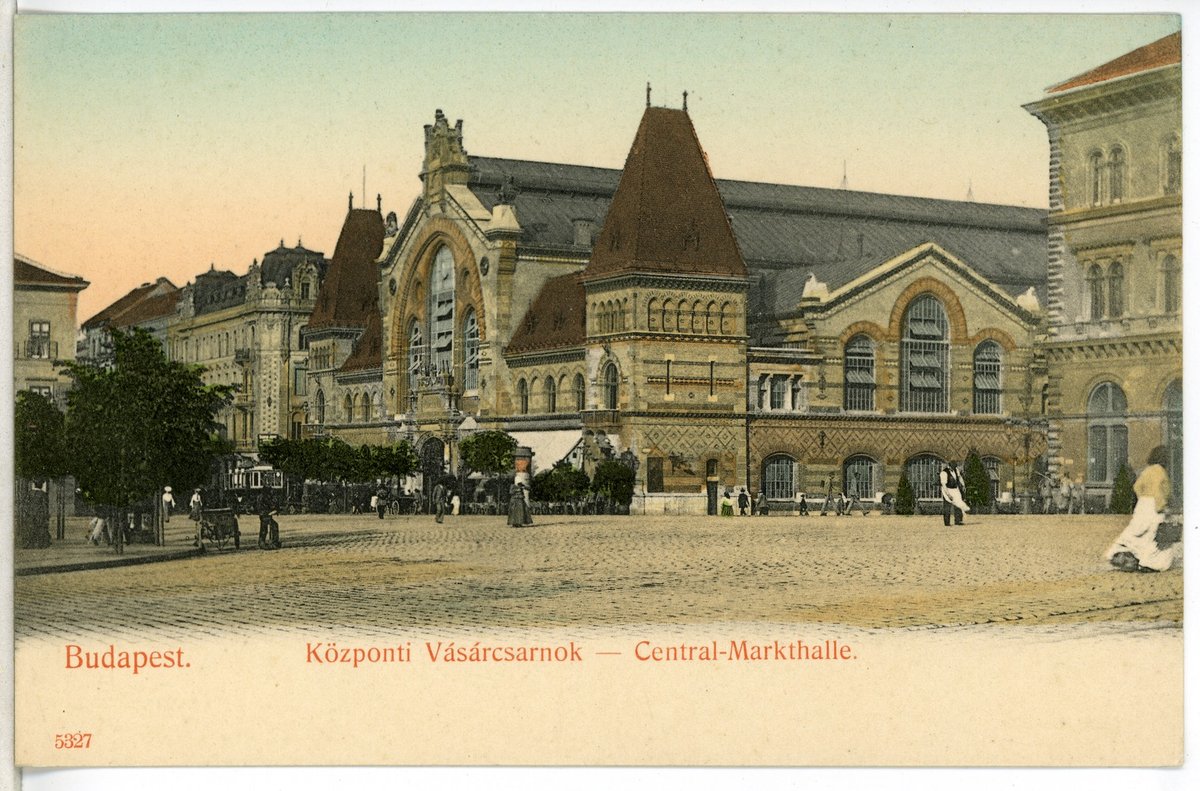
Great Market Hall Budapest: Visiting Hours, Tickets, and Comprehensive Travel Guide
Date: 14/06/2025
Introduction
Nestled at the southern end of Váci utca and adjacent to Liberty Bridge, Budapest’s Great Market Hall (Nagyvásárcsarnok) is both an architectural marvel and a vibrant social hub. Since its opening in 1897, it has been a vital part of the city’s culinary and cultural life, offering an immersive experience for locals and tourists alike. This detailed guide covers everything you need to know: history, opening hours, ticketing, accessibility, travel tips, and highlights, ensuring you make the most of your visit.
Historical Background
Origins and Urban Context
The Great Market Hall emerged during a period of rapid modernization in Budapest following the unification of Buda, Pest, and Óbuda in 1873. By the late 19th century, the city’s open-air markets were seen as outdated and unhygienic. The city council responded by commissioning a network of covered market halls to regulate food distribution and improve urban hygiene. The Great Market Hall was conceived as the centerpiece of this initiative, symbolizing Budapest’s ambitions as a modern European metropolis (We Love Budapest; Daily News Hungary).
Design and Construction
Designed by architect Samu Pecz, the hall blends neo-Gothic and neo-Renaissance styles with cutting-edge steel engineering of its era. The structure spans approximately 10,000 square meters, with a distinctively colorful Zsolnay ceramic tile roof. Its location at the foot of Liberty Bridge allowed for easy transportation of goods, including a tunnel that once connected directly to the Danube (Budapest Danube; Cestee).
Architectural Features
The hall’s steel framework supports expansive, column-free interiors, while its ornate facades—with pointed arches and intricate stonework—exude civic pride. The Zsolnay tiled roof, made in Pécs, is a standout element, symbolizing Hungarian craftsmanship (Wikipedia).
Restoration and Preservation
After suffering significant damage during World War II and subsequent periods of neglect, the Great Market Hall underwent a major restoration in the 1990s, preserving its original features and expanding its role in Budapest’s urban life. The restoration received the FIABCI Prix d’Excellence in 1999 (We Love Budapest).
Visiting Information
Location and Access
The market is centrally located at Vámház körút 1-3, in Budapest’s 9th district, right by Liberty Bridge and the Danube.
Public Transportation:
- Metro: Fővám tér (Line M4) is directly in front.
- Tram: Lines 2, 47, and 49 stop at Fővám tér.
- Bus: Lines 15 and 115 have nearby stops.
- Walking: Easily accessible from the city center and river promenade (Budapest.net).
Opening Hours
- Monday: 6:00 AM – 5:00 PM
- Tuesday – Friday: 6:00 AM – 6:00 PM
- Saturday: 6:00 AM – 3:00 PM
- Sunday: Closed
Opening hours may vary on public holidays; check the official website for updates (opentimehours.com).
Admission & Tickets
- General Entry: Free.
- Guided Tours/Special Events: Tickets may be required; book in advance through the official site or local operators.
Accessibility
- Wheelchair Access: Ramps and elevators throughout.
- Restrooms: Available on the upper floors (a small fee may apply).
- Family-Friendly: Playground across Fővám Square.
What to See and Do
Market Layout
- Ground Floor: Fresh produce, meats, cheeses, paprika, and baked goods—the main grocery area for locals.
- First Floor/Mezzanine: Eateries serving Hungarian street food (lángos, goulash, strudel, chimney cake) and souvenir shops.
- Basement: Fishmongers, pickled goods, and specialty shops (Cestee).
Shopping Highlights
- Hungarian Specialties: Paprika, salami, sausages, Tokaji wine, honey, pickles, cheeses.
- Artisan Crafts: Embroidered linens, ceramics, wooden toys, folk art.
- Street Food: Lángos, goulash, stuffed cabbage, chimney cake (Hungary Unlocked).
Events and Tours
- National Days: Cultural showcases and international food weeks.
- Food Tours: Guided tastings and market history.
- Live Music: Occasional concerts and performances (Budapestbylocals.com).
Photography
- Best Spots: Main entrance (Fővám tér), upper gallery (steel arches and natural light), and the colorful tiled roof from outside.
- Tips: Early morning offers the best lighting and fewer crowds.
Practical Tips
- Payments: Many vendors accept cards, but some are cash-only—carry Hungarian forints.
- Languages: Most stallholders speak some English; learning a few Hungarian greetings is appreciated.
- Safety: Beware of pickpockets in crowded areas; keep valuables secure (sunshineseeker.com).
- Luggage: Avoid large bags due to crowding and lack of storage.
- Best Times to Visit: Weekdays mid-morning or mid-afternoon for fewer crowds; Saturdays are busier but offer lively cultural programs (allthingsbudapest.com).
Nearby Attractions
- Liberty Bridge (Szabadság híd)
- Danube Promenade
- Corvinus University
- Hungarian National Museum
- Gellért Thermal Bath
Frequently Asked Questions (FAQ)
Q: What are the opening hours?
A: Monday 6:00 AM–5:00 PM, Tuesday to Friday 6:00 AM–6:00 PM, Saturday 6:00 AM–3:00 PM, closed Sunday.
Q: Is there an entrance fee?
A: No, entry is free. Fees may apply for guided tours or special events.
Q: Is the market wheelchair accessible?
A: Yes, with ramps and elevators.
Q: How do I get there?
A: By metro (Fővám tér, Line M4), tram (2, 47, 49), bus (15, 115), or on foot.
Q: Are guided tours available?
A: Yes; book via the official website or tour providers.
Q: Can I take photos inside?
A: Yes, but be respectful and ask vendors if photographing their stalls.
Visuals and Media
Recommended visuals:
- Exterior shots highlighting the Zsolnay tile roof (alt: “Great Market Hall Budapest exterior with Zsolnay tile roof”)
- Interior market scenes (alt: “Budapest Great Market Hall interior”)
- Images of food and crafts (alt: “Hungarian paprika at Central Market Hall”)
- Map showing the market location and transport links
Conclusion
The Great Market Hall is far more than a market—it’s a living symbol of Budapest’s history, architecture, and culinary traditions. From its late-19th-century origins as a solution to urban food supply challenges, through its architectural restoration, to its present role as a cultural and social hub, the Hall offers a unique blend of sensory delights and heritage.
Whether sampling authentic Hungarian street food, shopping for unique crafts, or photographing the neo-Gothic structure, a visit here is essential for understanding the soul of Budapest. Plan your visit, explore every level, and immerse yourself in this vibrant market’s sights, sounds, and flavors.
Ready to explore?
Download the Audiala app for guided tours and insider tips, and discover more Budapest travel inspiration through our related articles and social channels.
Sources and Further Reading
- The Story of Budapest’s Great Market Hall: All Foreigners Adore Photos, 2023, Daily News Hungary (Daily News Hungary)
- The Surprisingly Colorful History of Budapest’s Great Market Hall, 2016, We Love Budapest (We Love Budapest)
- The Great Market Hall, Danube River Sights in Budapest, 2021, Budapest Danube (Budapest Danube)
- Great Market Hall, 2024, Wikipedia (Wikipedia)
- The Great Market Hall, 2023, Cestee (Cestee)
- Great Market Hall Budapest: Visiting Hours, Tickets, and Cultural Significance, 2023, Hungary Unlocked (Hungary Unlocked)
- Central Market Hall, Budapest.net (Budapest.net)

